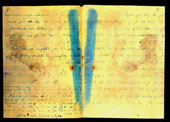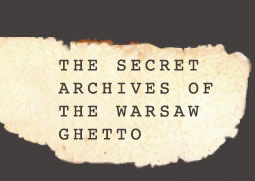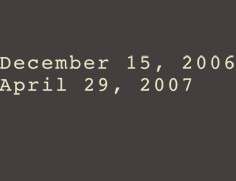The Warsaw Ghetto
Emmanuel Ringelblum, historian
The Oyneg Shabbes collective
Alerting the world
The Preservation of the Archives
Rediscovery
The Preservation of the Archives
At the beginning of the summer of 1942, the leaders of Oyneg Shabbes were warned by the Polish Resistance
that mass deportation of the ghetto population was imminent. They decided to collect the archives which thus
far had been dispersed and to hide them in a safe place. It was only on August 3, two weeks after the ‘Aktion’
had begun, that Israel Lichtensztajn, with the help of his students, Nachum Grzywacz and Dawid Graber, put the documents
in ten metal containers in a small recess in the cellar on 68, Nowolipki Street.
After the majority of the Warsaw Jews had perished, the few survivors of Oyneg Shabbes assessed the human losses
and damages and continued compiling archives in what the Germans called the Restghetto. Ringelblum, Wasser and Gutkowski
participated in the Jewish coordination committee, the underground ghetto government, as from the autumn of 1942. Preparations
for armed combat took up all the forces of the resistance. Documents from underground organizations in particular the Youth movements,
who were to become the spearhead, were stored away in the hiding place including several calls to arms which proclaimed: “Do not
go to your death without resistance! Fight for your lives and you stand a chance to survive!” At the end of the month of
February 1943, the second part of the archives was stored in two milk cans hidden deep in the cellar on 68 Nowolipki Street.
The third and last part of the archives was hidden just before the uprising in the building on 34 Swietojerska Street.
The Insurrection had considerable symbolic importance, but as the Resistance movement expected, almost all the fighters and
inhabitants who still lived within the ghetto were killed and the ghetto itself was reduced to a heap of ruins. Oyneg Shabbes
ceased to exist but Emmanuel Ringelblum escaped the wave of destruction in hiding with his family and 35 other survivors in
an underground shelter situated in the ‘Aryan’ quarter of Warsaw. There he wrote Polish–Jewish Relations
during World War II and a book called ‘Portraits’ devoted to renowned Jews who had been assassinated. In March
1944, the shelter was discovered upon denunciation. Emmanuel Ringelblum, his wife, Judith and their son Ouri age 13, their
Jewish companions and the righteous Poles who had hidden them were all led to the ruins of the Ghetto and shot.

© Jewish Historical Institute in Warsaw






